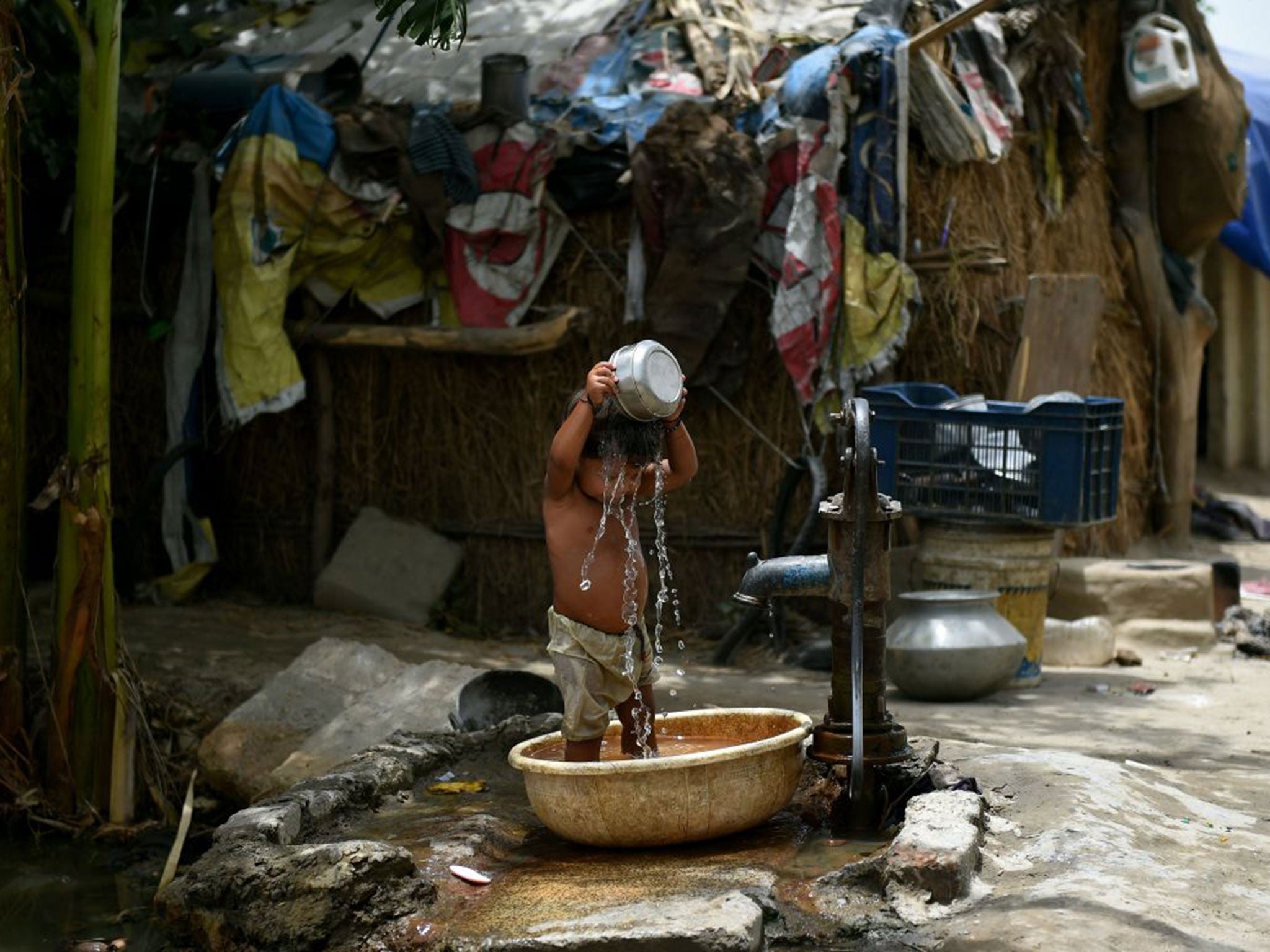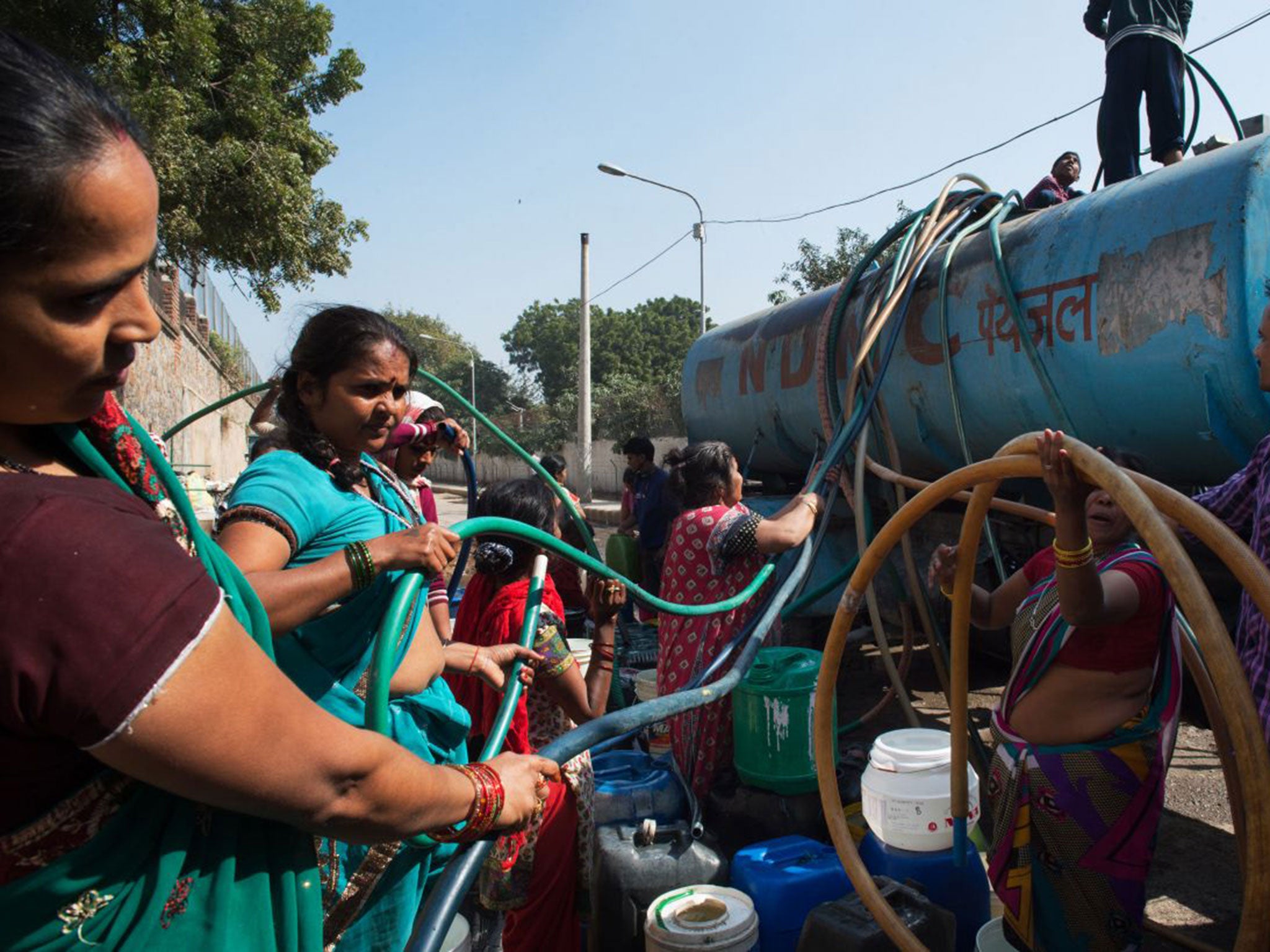Breaking Delhi's water mafia: how access to clean water got political in India
Residents having to spend up to a fifth of their income on clean water - in a country where 76 million people lack access to a safe supply

Your support helps us to tell the story
From reproductive rights to climate change to Big Tech, The Independent is on the ground when the story is developing. Whether it's investigating the financials of Elon Musk's pro-Trump PAC or producing our latest documentary, 'The A Word', which shines a light on the American women fighting for reproductive rights, we know how important it is to parse out the facts from the messaging.
At such a critical moment in US history, we need reporters on the ground. Your donation allows us to keep sending journalists to speak to both sides of the story.
The Independent is trusted by Americans across the entire political spectrum. And unlike many other quality news outlets, we choose not to lock Americans out of our reporting and analysis with paywalls. We believe quality journalism should be available to everyone, paid for by those who can afford it.
Your support makes all the difference.As the clanking metal tanker turns into the gravel road, women carrying large plastic barrels vie to be first in line for the delivery. Within minutes, residents of this corner of Sangam Vihar, a sprawling unofficial settlement on the edge of Delhi, have attached a plastic pipe to the container, taking turns to drain its precious cargo: clean water.
Suddenly, a motorbike shoots into the alley, runs over the tube and punctures it. A jet spurts into the air, throwing the women into hysterical panic. “This tanker only comes once every 15 days. It’s not enough for us!” says Mamta Devi.
Like a quarter of Delhi households, Ms Devi and her neighbours get no piped water into their homes, forcing them to rely on ground water from bore wells, or on tankers bringing supplies from outside.
This tanker’s treated water is government-supplied and free, part of an attempt by authorities to break the stranglehold of what locals call the “water mafia” – those profiting from Delhi’s acute water shortage.
The Indian capital’s inability to satisfy its burgeoning population’s need for water mirrors the situation across the country where 76 million people, the highest number in the world, lack access to safe water, according to a report released today by WaterAid. A 2013 audit of Delhi’s water system found it provided 200 million gallons less per day than its 17 million residents require.
In Sangam Vihar, opportunist businessmen cashed in on the discrepancy, digging their own illegal wells or seizing official supplies to resell at a higher price, often, some claim, in cahoots with the authorities.
The populist Aam Aadmi Party, elected to run Delhi last year, has promised free water for all, with pipes into all unplanned residential areas and a crackdown on private suppliers.
“It is totally immoral,” says Dinesh Mohaniya, Sangam Vihar’s representative in the Delhi assembly, of the water mafia. “Even in India’s capital, more than 65 years after independence, we can’t provide drinking water to our citizens – it’s shameful.”
He says more Delhi water board tankers are now plying his constituency, tube wells have been recaptured and put under community control, and a newly extended pipeline is within reach of 70 per cent of the area’s people. But many are still forced to supplement supplies from private sources, and some appear untouched.

In Lalita Yadav’s neighbourhood, visits by official tankers are rare. She says her household, with a monthly income equivalent to £90, has to pay £20 a month for water from a private well. “I could put my children into a better school with that money,” she says angrily. “If we complain, they will cut off our water. For them, it’s just a business.”
One local supplier, Om Prakash, says he charges between 50 pence and £1 per month to the 100 families who draw water from the well outside his home, but denies he is profiteering and says he sells water at a nominal price. “I consider it a public service,” he said. But many bore wells are themselves running dry and much of the water pumped from underground is contaminated, so unsuitable for drinking.
The capital depends on the Yamuna, Ganges and Sutlej rivers of northern India for most of its supply, but years of mismanagement and the city’s booming population puts the resources under constant strain. Even those connected to the piped network only receive water a few hours each day.
The city’s vulnerability was exposed last month when rioters in neighbouring Haryana sabotaged a crucial canal, leaving millions without water for days. Dinesh Mohaniya says Delhi’s water board is focusing on water conservation. But that is not enough. “We can provide pipelines, we can create networks, but we can’t create water,” he said.
Join our commenting forum
Join thought-provoking conversations, follow other Independent readers and see their replies
Comments